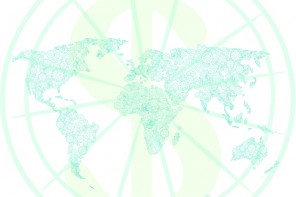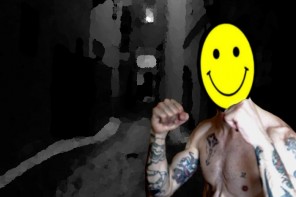Alice Grinda has dedicated her life to exploring the world that lies beneath waking consciousness. Dubbing herself ‘Alice in Wakedreamland’, she’s always been intrigued by the sleeping state and seeing how far the rabbit-hole goes. It was in her work as a lucid dreaming teacher that Alice first became acquainted with the idea of polyphasic sleep – that is, sleeping for several shorter periods throughout the day, rather than in one solid block. Alice talks about her experiences with several different sleep schedules and the subsequent cycles of zombification, reinvigoration and the eventual unexpected health benefits of polyphasic sleep.
Two hours a day – that’s how long I sleep. From 3:25pm to 3:45pm, 7:25pm to 7:45pm, 11:25pm to 11:45pm, and the same times in the AM. And my sleep is more conscious, efficient and invigorating than the solid eight hours that most adult humans spend sleeping.
When I heard I could reach a higher level of consciousness and enhanced lucid states through polyphasic sleep schedules, I was intrigued. I devoured the book ‘Ubersleep’ written by a woman known as PureDoxyk, inventor of the UberMan schedule. This schedule is made up of only six separate 20 minute naps spaced out every four hours. That’s only two hours sleep per day. This sounded somehow crazy but I was hooked on the idea and the more I thought about it, the more curious I became.
There was only one thing holding me back: I’d been suffering from an undiagnosable medical condition for the previous two years and was afraid that this would be too much strain on my health. I was plagued daily by insufferable neck and back pain, as well as constant lethargy and fatigue. Doctors couldn’t help me. I was afraid I wouldn’t have the energy to withstand the gruelling adaptation process I’d read about when shifting to a new sleeping schedule.
But the thought persisted. Eventually my curiosity overcame my fear and I just thought, fuck it, I’m suffering anyway.
In April of 2013, I began to adapt to a polyphasic schedule. I tried to adapt two times to UberMan and two times to a slightly easier schedule called EveryMan. Slowly I was getting to know more and more, but maintaining the schedule was incredibly challenging – you have to live your life like that. I kept reaching a breaking point and falling out of the schedule, only to try again a few weeks later and start the process all over again.
Before attempting these experiments, I was worried about my medical condition, that I might be exacerbating my ever-present pain symptoms. But miraculously, polyphasic sleeping had the opposite effect. The first time I tried EveryMan, I was completely sleep deprived – I was operating with the mental capacity of a zombie. But I noticed that somehow my pain was completely gone. I felt like a zombie but had no pain. It stayed like that. This became one of my biggest motivations to fully adapt.
I wanted to commit to this, but I knew I needed help, so in April of 2014 I tried again. I spent three weeks adapting to UberMan, but this time I enlisted the help of friends, who would come over from midnight until 8am. After three weeks of relying on others to help me, I started to attempt more independence. The friends who helped could no longer commit so much time to keeping me awake through the night, but becoming more independent hasn’t been easy. It’s not only discipline – if you have a life that goes against it, it’s impossible. I needed to create surroundings that supported my new sleeping schedule.
It can take anywhere from two to four weeks to fully adapt, and the in-between adaptation stage is gruelling and relentless. The first two times I adapted I didn’t go into sleep deprivation. I didn’t really know the difference between being tired and being truly sleep deprived. But after the first round of sleep deprivation, I could watch for the signs and knew when it started. I began to get narcoleptic symptoms. I would fall asleep talking or walking, and that’s when the battle really started.
In the times that I had friends with me, they would often see me ‘switch’. One moment I was awake and coherent and the next I was suddenly in zombie mode, almost sleepwalking. My dreams would bleed into reality and I would be following narratives in real life that were happening in my head. This phase was the hardest phase to get through – to fight your own consciousness, to keep a tangible connection to reality. During the adaptation I was in between being a zombie with absolutely no focus, and being in constant pain when I accidentally overslept. The fight to rewire my sleeping habits was so hard and so painful. I nearly gave up so many times.
But slowly, slowly I started to make progress and, as I did, my pain symptoms disappeared. But it was always a challenge to balance the physical and the psychological. In the beginning, days three and four were so incredibly bizarre. I had so many hallucinations. Whenever I relaxed my eyes, everything moved, or I heard voices. I saw what I was doing but I had another consciousness. It was really interesting, I loved it. But I began to get better and overslept less and less until I was eventually sticking to the schedule. Now the hallucinations have faded. I’m more adapted and a part of me misses that straddling of both the waking and dreaming worlds.
To be able to adapt, I’ve had to structure my life in a way that allows for polyphasic sleep. While it’s not always easy, I’m finding ways to slot my naps into everyday situations. I no longer own a bed because I never sleep at home these days. I’m used to sleeping in different places now – my body knows when it’s time and I fall asleep immediately when I allow myself the allotted twenty minute naps. As a result, my lucid dreaming is enhanced to a level I’ve never experienced before, my days are longer and more productive and I know now, after finally adapting, that this is the only way for me to escape my pain. I’m not a zombie, I’m not suffering. I’m free.







